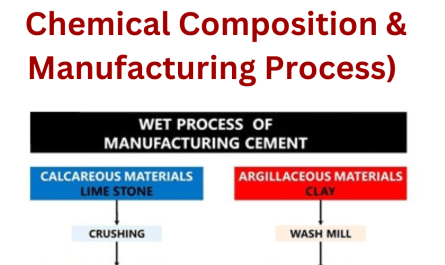QUICK SETTING CEMENT
Definition:
The distinction between quick-setting cement and rapid-hardening cement lies in their setting characteristics and strength development rates. Quick-setting cement initiates its setting process earlier, while exhibiting a strength gain trajectory akin to Ordinary Portland Cement (OPC). Conversely, rapid-hardening cement achieves rapid strength development.
Quick-setting cement finds application in scenarios demanding swift completion, particularly in concreting projects subjected to time constraints or conducted in static or running water environments. Also referred to as fast-setting cement or rapid-set cement, it expedites construction or repair tasks by swiftly attaining high early strength and promptly solidifying upon water incorporation.
In contrast, rapid-hardening cement is formulated to rapidly acquire strength, distinguishing itself with accelerated strength development compared to OPC. This cement variant serves as an advantageous choice in situations necessitating expedited construction processes or immediate load-bearing capabilities.
Both quick-setting and rapid-hardening cements facilitate early removal of formworks, enhancing construction efficiency. However, it’s essential to note that while quick-setting cement meets urgent project timelines and water concreting requirements, rapid-hardening cement excels in promptly achieving robust concrete structures, contributing to efficient project execution.

key features :
Setting Time: Quick-setting cement typically boasts an exceptionally short initial setting time, often within a few minutes of water addition. This swift onset of hardening expedites construction activities, reducing overall project duration.
High Early Strength: Similar to rapid-hardening cement, quick-setting cement exhibits rapid strength development during the initial stages of hydration. Within a matter of hours, it can achieve substantial strength, facilitating prompt formwork removal and enabling early load-bearing capabilities.
Applications: Quick-setting cement finds widespread use in emergency repair scenarios, such as addressing leaks, plugging holes, repairing damaged concrete structures, and anchoring posts and anchors. Additionally, it proves invaluable in situations necessitating swift turnaround times, including cold weather concreting or projects with stringent construction schedules.
Fineness: Comparable to rapid-hardening cement, quick-setting cement is often finely ground, enhancing its reactivity and expediting the hydration process.
Curing: Despite its rapid strength gain, adequate curing remains imperative for quick-setting cement to achieve optimal long-term strength and durability. Proper curing practices ensure complete hydration of the cement, preventing premature drying and minimizing the risk of cracking for sustained performance.
Limitations: Quick-setting cement may not attain the ultimate strength of Ordinary Portland Cement (OPC) over the long term. Furthermore, its rapid setting nature can pose challenges during construction, necessitating meticulous planning and coordination to mitigate potential issues.
Mixing: Due to its rapid-setting characteristics, it is essential to mix only the quantity of quick-setting cement that can be utilized within its specified setting time. Once the cement begins to harden, remixing or retempering becomes impractical, emphasizing the importance of judicious material handling and usage.



